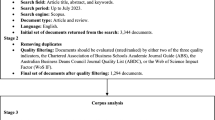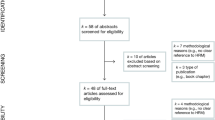Abstract
The article is focused on an application of the analytic hierarchy process (AHP) to the performance evaluation of employees of a management consulting company. Performance evaluation of employees is a complex task that must take into account various aspects and evaluation criteria. Moreover, each employee of the company participates during the period being considered in several projects and his or her overall performance is an aggregation of individual performances in particular projects. This aggregation is based on the weights of the projects that usually depend on man-days the employees participated in the projects or their financial contributions. AHP is a tool for structuring and analysis of complex decision making problems and seems to be an ideal tool for this task. The proposed AHP model combines relative and absolute measurement and allows deriving overall performance scores of the employees through a simple MS Excel tool easily and quickly without the necessity to use any specialized software.


Similar content being viewed by others
References
Albayrak E, Erensal YC (2004) Using analytic hierarchy process (AHP) to improve human performance: an application of multiple criteria decision making problem. J Intell Manuf 15(4):491–503
Armstrong M (2006) Handbook of human resource management practice. Kogan Page Limited, London
Armstrong M (2009) Armstrong’s handbook of performance management: an evidence-based guide to delivering high performance. Kogan Page Publishers, London
Banfield P, Kay R (2008) Introduction to human resource management. Oxford University Press, New York
Bersin J (2016) Global human capital trends 2016: the new organization: different by design. Deloitte University Press. https://www2.deloitte.com/us/en/pages/human-capital/articles/introduction-human-capital-trends.html. Accessed 18 Dec 2016
Bersin J (2014) Global human capital trends 2014: engaging the 21st century workforce. Deloitte University Press. http://www2.deloitte.com/global/en/pages/human-capital/articles/human-capital-trends-2014.html. Accessed 18 Dec 2016
Briscoe DB, Claus LM (2008) Employee performance management: policies and practices in multinational enterprises. In: Budwah PW, DeNisi A (eds) Performance management systems: a global perspective. Routledge, Abingdon, pp 15–35
Buckingham M, Goodall A (2015) Reinventing performance management. Harvard Business Review (online). https://hbr.org/2015/04/reinventing-performance-management. Accessed 18 Dec 2016
De Andres R, Garcia-Lapresta JL, Gonzales Pachón J (2010) Performance appraisal based on distance function methods. Eur J Oper Res 207(3):1599–1607
Delpo AA (2007) The performance appraisal handbook: legal and practical rules for managers. Nolo, Berkeley
Farkas A, Rósza P (2013) A recursive least-squares algorithm for pairwise comparison matrices. CEJOR 21(4):817–843
Giangreco A, Carugati A, Sebastiano A, Al Tamimi H (2012) War outside, ceasefire inside: an analysis of the performance appraisal system of a public hospital in a zone of conflict. Eval Program Plan 35(1):161–170
Gosselin A, Werner JM, Halle N (1997) Ratee preference concerning performance management and appraisal. Hum Resour Dev Q 8(4):315–333
Hamerman PD, Schooley C, Andrews C, Miller J, McGovern M (2016) Transform employee performance for continuous engagement. Forrester Research (online). https://www.forrester.com/report/Transform+Employee+Performance+For+Continuous+Engagement/-/E-RES115657. Accessed 18 Dec 2016
Haines VY, St-Onge S (2012) Performance management effectiveness: practices or context? Int J Hum Resour Manag 23(6):1158–1175
Ishizaka A, Lusti M (2006) How to derive priorities in AHP: a comparative study. CEJOR 14(4):387–400
Islam R, Rasad SM (2006) Employee performance evaluation by the AHP: a case study. Asia Pac Manag Rev 11(3):163–176
Lawler EE, McDermott M (2003) Current performance management practices: examining the varying impacts. WorldatWork J 12(2):49–60
Lyster S, Arthur A (2007) 199 pre-written employee performance appraisals: the complete guide to successful employee evaluations and documentation. Atlantic Publishing Group, Ocala
Longenecker CO, Fink LS (1999) Creative effective performance appraisals. Ind Manag 41(5):18–23
Potgieter L (2002) Appraisal vs performance management. Performance Management Institute of Australia (online). http://www.pmia.org.au/white/appvperf.pdf. Accessed 18 Dec 2016
Rock D, Jones B (2015) What really happens when companies nix performance ratings. Harvard Business Review (online). https://hbr.org/2015/11/what-really-happens-when-companies-nix-performance-ratings. Accessed 18 Dec 2016
Saaty TL (1990) The analytic hierarchy process. RWS Publications, Pittsburgh
Saaty TL (1996) Decision making with feedback: the analytic network process. RWS Publications, Pittsburg
Saaty TL, Peniwati K, Shang JS (2007) The analytic hierarchy process and human resource allocation: half the story. Math Comput Modell 46(7–8):1041–1053
Smith B, Hornsby JS, Shirmeyer R (1996) Current trends in performance appraisal: an examination of managerial practice. SAM Adv Manag J 61(3):10–15
Society for Human Resource Management (2014) HR professionals’ perceptions about performance management effectiveness (online). http://www.shrm.org/research/surveyfindings/articles/pages/2014-performance-management.aspx. Accessed 18 Dec 2016
Spence JR, Keeping LM (2011) Conscious rating distortion in performance appraisal: a review, commentary, and proposed framework for research. Hum Resour Manag Rev 21(2):85–95
Subramanian N, Ramanathan R (2012) A review of applications of analytic hierarchy process in operations management. Int J Prod Econ 138(2):215–241
Taylor FA, Ketcham AF, Hoffman D (1998) Personnel evaluation with AHP. Manag Decis 36(10):679–685
The Millennial Generation Research Review (2012) U.S. chamber of commerce foundation (online). https://www.uschamberfoundation.org/reports/millennial-generation-research-review. Accessed 18 Dec 2016
Vaidya OS, Kumar S (2006) Analytic hierarchy process: an overview of applications. Eur J Oper Res 169(1):1–29
Vroom VH (1994) Work and motivation. Wiley, New York
Acknowledgements
The research is supported by the Czech Science Foundation, Project No. 16-01821S.
Author information
Authors and Affiliations
Corresponding author
Rights and permissions
About this article
Cite this article
Lidinska, L., Jablonsky, J. AHP model for performance evaluation of employees in a Czech management consulting company. Cent Eur J Oper Res 26, 239–258 (2018). https://doi.org/10.1007/s10100-017-0486-7
Published:
Issue Date:
DOI: https://doi.org/10.1007/s10100-017-0486-7




